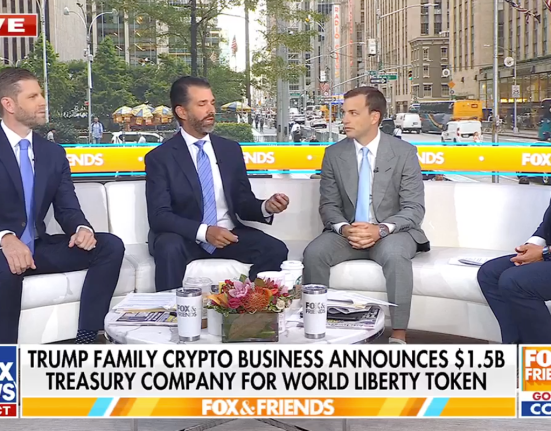Zak Brown turned around the moribund McLaren Racing Formula 1 team that went from being among the worst on the grid to the 2024 Constructors’ champion and current championship leader with Oscar Piastri.
The American’s makeover of the proud F1 team has been one of the great racing stories in recent years, and with an eye for more changes in series he loves, Brown would like to see the IndyCar Series, owned by Roger Penske, make a sizable investment that would allow the North American league to pose a greater challenge to F1, which has exploded in popularity on North American soil.
“I still think we need to slipstream Formula 1 and not view Formula 1 as a competitor,” Brown said in a media roundtable on Saturday at the Chevrolet Detroit Grand Prix. “I don’t think we do a good enough of a job of [that], and what could you do there?”
Brown says it’s time to change the thinking around IndyCar after years of Penske Entertainment’s efforts to shrink IndyCar’s annual expenditures and implement cost-saving measures. He pictures IndyCar as being capable of growing, and growing substantially, if an infusion of money is introduced.
“I know [Roger Penske] put a lot of money in; I’m not sure exactly how much, but I know they’ve invested,” Brown said. “I am of the view that whatever he bought it for can be [worth 10 times that over time], but the way to get there is to put in even more substantial amount of investment into the sport. I don’t know what numbers he’s paid. Let’s say, for argument’s sake, he put in $300 million. There’s a difference between sustaining the sport and kind of covering some losses versus going and putting another – pick a number – $100 million in and then going and doing what (Formula 1 owner) Liberty [Media] did around (the F1 race in Las) Vegas. Maybe not to that extreme, because the investment in Vegas – the Vegas race in itself – is definitely not profitable today, [but] what it did do is bring in a ton more sponsors, got you a more lucrative television contract.
“So if I look at the (IndyCar) schedule, I think we need to be in bigger cities. I know it’s got to be fiscally difficult to just be like, ‘Hey, I want to race in New York City.’ I know it’s not quite that easy, because it costs a lot of money, but I think [there’s a need to] invest in a few more key markets where the races themselves may not be profitable, but drive greater following of the sport, which leads to more sponsorship to bigger TV races. You get your money back in value creation, growth of the teams and the sport. I think the schedule is something and I think they recognize it.
“The [new 2026] Texas (race in Arlington around the Dallas Cowboys stadium) is a great venue. Being partners with (Cowboys’ owner) Jerry Jones, things of that nature are a good thing. So I would like to see an acceleration of the race schedule, because I do think they’re addressing it, but I’d like to see an acceleration of it, and I think you do that with more investment, and the payback probably doesn’t come on the race by race basis. It’s what it does to elevate the sport.”
IndyCar has enough name recognition, according to Brown, to become more popular if its growth was turbocharged with financial investment.
“They may not know when the next race is or who the champion is, but they know the brand,” he continued. “That’s such a good starting point that I don’t see, with how hot sports franchises are – whether they’re teams or leagues… Look at what UFC created and how much it was sold for. You’ve got this great brand with this great history. There’s no reason why IndyCar as a series shouldn’t be worth billions of dollars, but I think we need to put in more substantial investment in key areas to trigger that. That’s where the payback comes from, not making x-millions off the New York Grand Prix, but making hundreds of millions off the value creation growth, which then drags up all the teams. We get more sponsorship.
“You know, sponsorship of my Formula 1 team, I’d say half of our sponsors are US-based. A lot of that comes from the excitement that Vegas created, that Miami created. I think that’s how we need to look at payback for the sport, as opposed to an event by event P&L (profit and loss) basis. But again, I think you put a better product on the track, the team is going to get more sponsorship and they’ll be able to afford it. We need to play more offense. Maybe sometimes we play too much defense – you know, cost savings, cost savings, cost savings. At some point you got to go, ‘Actually, I want to play offense. I’m going to spend more to make more.’”
Brown would welcome the opportunity to join Penske and invest in IndyCar’s growth, if the sole owner of the series would entertain the idea of teams or outside entities investing in IndyCar’s rise.
“I would love to see a true franchise system,” he said. “If you think about NFL, MLB, NBA, F1 kind of – technically, they’re not equity owners, but the way it’s set up, I’d love to see that, because I think that then means the teams share and can take the same view. My annual P&L is one thing, but [if] the value of my IndyCar team has gone up, then you also have everyone rowing the same direction because everyone’s sharing in the growth of the sport. It’s not my decision, but personally, I’d love to see that.”







